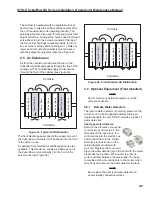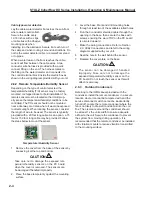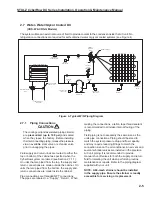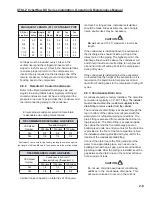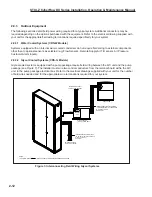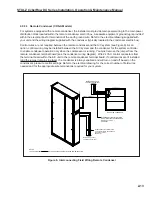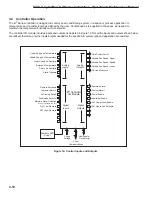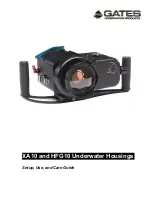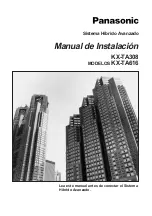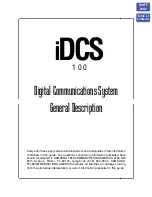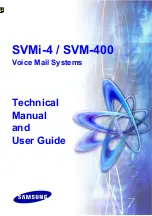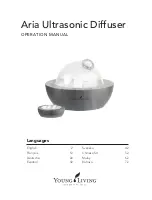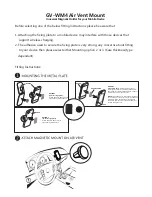
STULZ CyberRow DX Series Installation, Operation & Maintenance Manual
4. Block off a portion of the intake air to the
condenser until a constant discharge pressure
can be obtained. This will lower the possibility of
overcharging. Allow the discharge pressure to rise
to 445-480 psig and hold it constant.
5. Slowly meter
liquid
refrigerant through the suction
side while watching the pressure gauges and
monitoring superheat and sub-cooling temperatures.
CAUTION
Add liquid refrigerant slowly to prevent the
refrigerant oil from “washing out” of the
compressor.
6. Take a superheat temperature reading near the
feeler bulb from the auxiliary control module with
the temperature measuring device being well
insulated. The ideal superheat temperature is 12-
15°F. Maximum allowable superheat temperature
is 20°F.
CAUTION
Do not exceed 20°F superheat. Exceeding
this temperature may cause failure of the
compressor.
7.
While monitoring the pressure, take a sub-cooling
temperature reading on the output side of the
condenser. The sub-cooling temperature should
be 10-20°F.
8.
If necessary, (slowly) add
liquid
refrigerant to the
suction side to achieve the correct sub-cooling
temperature.
CAUTION
Remove the blockage from the air intake of the
condenser.
9.
Fill out the applicable sections of the Warranty
Registration and Start-Up Checklist.
2.10.2.4 -30°F Ambient Applications
NOTE
For units designed for -30°F operation, a
receiver is used to store the refrigerant during
the time the condenser is not utilizing the extra
refrigerant charge.
1. Follow steps 1 - 8 in Section 2.10.2.3. Once
superheat and sub-cooling temperatures are
stabilized, additional refrigerant must be added to
the receiver.
NOTE
It is important not to exceed 80% of the total
condenser and receiver volume to allow room
for expansion.
2. A refrigerant level sight glass is located on
the side of the receiver to assist the service
technician in charging the air conditioning system.
The proper charge can be determined by viewing
the level of refrigerant in the receiver while the
unit is running at an elevated discharge pressure.
3. Keep the air intake to the condenser blocked
and maintain the discharge pressure at 445 psig
and hold it constant. The condenser fan nearest
the condenser header should be operating
continuously. All other fans, if additional fans
exist, should be off during this time.
4. Add additional refrigerant charge to the receiver
as needed until the refrigerant level rises to the
center of the sight glass, indicating the receiver is
80% fi lled.
When the refrigerant in the receiver reaches the
sight glass, the unit is fully charged.
CAUTION
Remove the blockage to the air intake of the
condenser.
5.
Fill out the applicable sections of the Warranty
Registration and Start-Up Checklist.
2-17
Содержание CyberRow DX CRS-042-G
Страница 94: ......

